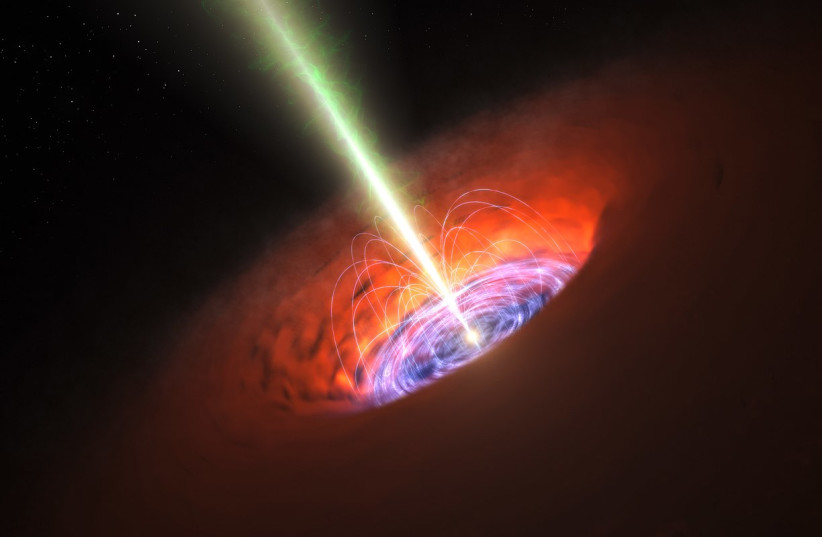Scientists have managed to look at the never-before-seen outskirts of a supermassive black hole's accretion disk, the metaphorical buffet for the all-consuming masses at the centers of galaxies, and they did it all by complete accident, according to a recent study.
The groundbreaking observations were made possible despite the many obstacles surrounding looking at such a faraway object in space bordering something that absorbs all light.
The findings of this study were published in the peer-reviewed academic periodical The Astrophysical Journal Letters.
A black hole's buffet: What is an accretion disk and why are they so hard to see?
A normal black hole is formed when a large star dies, causing a concentration of gravity so strong that it pulls in everything around it, even light. This, naturally, makes them incredibly mysterious and difficult to actually see, with scientists only having ever figured it out by seeing how their gravity impacts everything around them.
But supermassive black holes are even larger, technically measuring over 100,000 solar masses but could even measure millions and billions of solar masses. To put that into perspective, one solar mass is equal to the Sun.

These black holes are incredibly important in the universe as they sit at the centers of almost every galaxy. This includes our own Milky Way Galaxy, home to the supermassive black hole Sagittarius A*.
Surrounding every supermassive black hole at the center of a galaxy is an accretion disk. This term specifically refers to the process (accretion) by which black holes gather more material.
These disks are filled with fast-rotating high-temperature gases that give off light – though the black holes themselves do not.
In fact, the accretion disks can be so bright that they can contribute to the development of active galactic nuclei, an especially bright region at a galaxy's center with characteristics indicating that the light isn't being produced by stars.
Scientists have considerable interest in studying accretion disks because since they are what feed black holes, studying them can help us understand how black holes develop and how galaxies develop around them. But they're very hard to see. The only way scientists can actually be sure one is around a supermassive black hole is if there is a very specific emission line pattern known as a double-peaked profile, barring the only two cases where an accretion disk has been outright imaged directly thanks to the Event Horizon Telescope taking pictures of black holes.
These emissions are from when atoms start releasing light as their energy level drops, and they often appear in spectra analyses as sharp spikes. In accretion disks around supermassive black holes, though, these lines usually seem more like peaks.
How do you study something as relatively small as an accretion disk?
The scientists behind this study managed to do just that by complete accident.
This was done using the Gemini North telescope. Located in Hawaii, this telescope is often used for studying supermassive black holes, star formation, distant quasars, and more.
Using this, the researchers were able to detect the hard-to-spot near-infrared emission lines from the accretion disk of the faraway galaxy III Zw 002.
But the findings themselves were spotted by accident, during observations with the Gemini Near-Infrared Spectrograph in order to supplement findings from prior studies about III Zw 002.
What does this mean?
Well, emission lines have to originate somewhere. One of the two lines spotted in this study came from the inner region of the disk where the lines originate from. But one of the other lines came from somewhere else – a region of an accretion disk never before observed.
"For the first time, the detection of such double-peaked profiles puts firm constraints on the geometry of a region that is otherwise not possible to resolve," said Brazilian researcher Alberto Rodriguez-Ardila, who was involved in the study. "And we now have clear evidence of the feeding process and the inner structure of an active galaxy."
More studies of this galaxy and its accretion disk may reveal even more information about these enigmatic objects in space.
